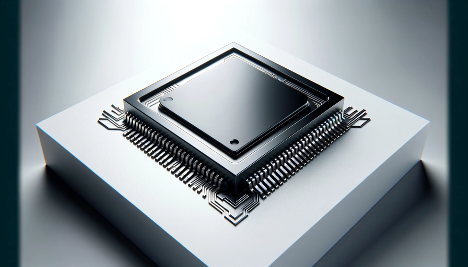
The NSA Hates This Chip!
Posted April 25, 2024
Chris Campbell
As we laid out yesterday…
Analog computing, a technology that predates the digital era, is making a comeback. Its revival represents a full-circle moment in technological history…
And it could shake out to be one of the BIGGEST opportunities in tech hardware of this decade.
Before we get to the quick recap -- and nine ways you can invest in the analog’s return -- let’s first talk about the $60,000 rhinoceros in the room.
Sheesh!
“That might be the craziest live event I’ve ever taken part in,” Doug Hill, our VP of publishing, just said.
Of course, he was talking about James’ “$1,000 a minute” event.
The event was a HUGE success.
If you weren’t there (or even if you were)…
Our team is working on getting a rebroadcast of the event right away. If you joined late, or had to leave a bit early, you’ll get the replay sent to your inbox.
MEANWHILE, our moderator pointed out an issue.
The link for the 1,000 VIP vouchers -- worth well over $20,000 -- vanished after the event was over. (Wasn’t supposed to happen!)
So here’s that link:
On that website, you’ll get a VERY special offer for EVERYTHING James publishes.
And look…
I’ve been in this business for over a decade. With the level of depth and knowledge that Team Altucher provides, it’s one of the best deals in our industry.
Sure, I might be biased. So don’t take it from me.
Consider what Frederick L. wrote in the chat box during the event today:
“Hey I didn’t win but James DEFINITELY knows what he’s talking about. He’s REALLY dropping some true jewels! And if you were blessed enough to win tonight, the very first thing you may consider is to reinvest in this information!”

We received tons more good feedback from the event. I’ll share more tomorrow.
Now, onto the subject of today’s “future meets past” missive:
Why Analog is Coming Back
By processing data in its continuous, real-world form, analog chips bypass the energy-intensive analog-to-digital conversion process that current systems require.
For an analogy, this is like a translator who can directly understand and respond to a foreign language without the need for an intermediary.
Analog processors can handle sensor data, audio, and video in their native waveform state, eliminating the need for conversion into discrete binary values.
This conversion process is computationally expensive for digital chips, requiring high-speed, high-resolution sampling that consumes significant power.
Another analogy: Imagine a digital chip as a meticulous artist trying to replicate a smooth, continuous painting using only tiny, square pixels -- that’s a lot of work.
BUT, here’s the thing:
The benefits of analog computing extend beyond energy efficiency.
The NSA Hates This Chip!
Analog systems are inherently more secure and private, as they don't rely on easily duplicated and transmitted digital data.
It's the difference between a handwritten letter to an email -- the former is unique and difficult to copy, while the latter can be easily duplicated and intercepted.
Despite these advantages, analog computing faced challenges in programmability and manufacturing stability, allowing digital systems to dominate for decades.
However, recent advancements in semiconductor manufacturing and the growing demand for power-efficient solutions have reignited interest in analog computing.
The rise of AI, machine learning, and IoT devices has pushed digital computing to its limits, creating an opportunity for analog to shine.
The Future is Hybrid
Here’s what’s most likely to happen:
Analog processors will efficiently handle core primitives while ALSO collaborating with digital chips for more complex tasks, forming a symbiotic relationship.
The good news: As we embrace analog computing, we can look forward to more secure and efficient technologies.
From smart agriculture and factories to personalized health monitoring, analog processors will enable us to blanket reality with intelligent, low-power sensor networks.
And if you’re reading this, you’re already WAY ahead of the curve.
How to Invest
While we’re still early in this trend, it is worth allowing the following ideas to percolate.
Worth noting first:
Many of these ideas align with several investment recommendations in our portfolios -- whether it’s Paradigm Mastermind Group or Early Stage Crypto Investor.
Consider:
A] Let’s start with the obvious: Invest in companies researching and developing analog chips and processors. These companies are at the forefront of the analog computing revolution. Some of them will fly.
B] Consider investing in semiconductor manufacturing companies that support analog chip production. As demand for analog chips grows, these companies may benefit from increased production.
C] Look for companies that produce sensors and IoT devices that can benefit from analog processing. These companies may experience growth as analog computing enables more efficient and cost-effective sensor networks.
D] Invest in AI and machine learning companies exploring analog computing solutions. Analog processors can greatly enhance the efficiency of AI and ML workloads, making these companies potential beneficiaries of the analog trend.
E] Consider investing in companies focused on edge computing and decentralized data processing. Analog computing's efficiency and privacy benefits align well with the growing trend of processing data closer to its source.
F] Explore investment opportunities in sectors that may benefit from analog-powered sensor networks, such as smart agriculture, industrial automation, and healthcare monitoring. Companies in these sectors may experience growth as analog computing enables more sophisticated and cost-effective monitoring solutions.
G] Invest in research and development (R&D) focused on analog computing through venture capital or private equity funds. Supporting early-stage companies and research initiatives could provide exposure to the analog computing trend.
H] Consider investing in companies that provide design tools, software, and frameworks for analog computing. As analog computing gains traction, there will be a growing need for specialized development tools and platforms.
I] Look for companies that offer analog-to-digital converters (ADCs) and digital-to-analog converters (DACs). While analog computing aims to reduce the need for conversion, these components will still play a crucial role in bridging the gap between analog and digital systems.
Keep in mind…
The analog computing trend is still in its early stages, so it may take time for some of these investment opportunities to materialize.
But, as usual, we LOVE being ahead of the curve. And we’re on the hunt for opportunities in this space with huge upside potential.
